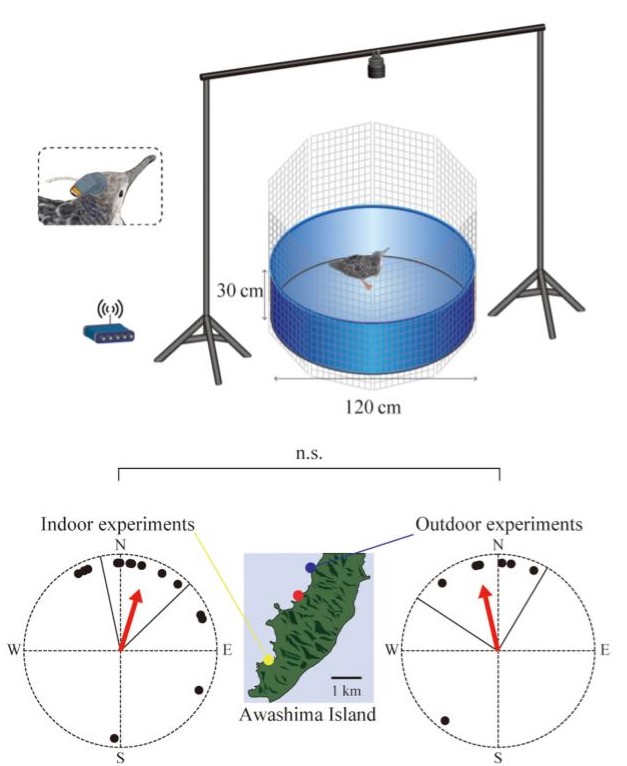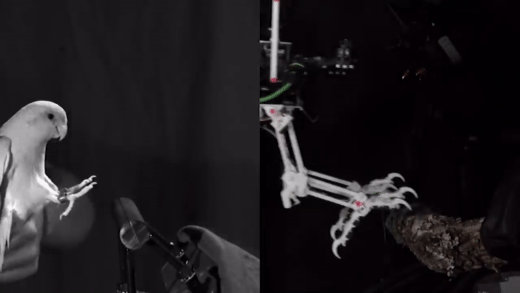How do birds navigate? When they face north, their brains do something incredible.

- Migratory birds travel thousands of miles over foreign terrain and featureless ocean.
- A magnetically sensitive protein, located in the eyes and brain, allows the birds to detect a landmark magnetic field.
- A brain region called the medial pallium is responsible for assigning direction to magnetic fields.
Off the coast of Awashima Island, a two month-old streaked shearwater chick huddled against its siblings. The weather had been getting colder. Soon, the white-and-brown-winged family would navigate over 4,000 miles of foreign terrain and featureless ocean until arriving in Australia. For now, however, the vacation must wait.
A group of neuroscientists and ecologists from Doshisha University and Nagoya University approached the burrow. They had questions about the chick’s travel plans. Most notably, how does it know where it’s going?
Birds rely on magnetic fields to navigate long distances
It’s not the first time scientists have demanded answers from birds. In 1942, William Keeton’s parents gave him his first homing pigeons for his ninth birthday. He cherished the regal bird and forwent chores and school work to train the bird. In races, however, the bird rarely won. Such shame at such a young age can only drive a person to do one thing: become a scientist.
One thing led to another, and in 1965, Keeton — then a professor of biology at Cornell University — was strapping magnets to pigeons. Because previous studies had shown that some animals align their bodies to magnetic fields, Keeton hypothesized that this was important for navigation. He was correct. The polarized pigeons were clumsy navigators at best.
Over the next several decades, researchers investigated how migratory birds detect magnetic fields. In general, most scientists rejected the idea that birds hid a compass under their wings. That, of course, would be silly. The compass, or rather a magnetically sensitive protein, was hidden in the birds’ eyes and brain.
At first glance, that seems to be the end of the story: Birds navigate by magnetic fields, and they have a special protein that allows them to detect magnetic fields. However, one question lingers: How do the birds translate a magnetic field into direction? This is what the scientists behind the recent study hoped the streaked shearwater chick could answer.
Detection is not sufficient for direction
Imagine losing a cell phone while visiting a friend. Your friend calls your phone. You hear a gentle ringing but you cannot immediately pinpoint where it is coming from. You cock your head a little to the left, and then to the right. The couch!
During this instance, the ear immediately detected the sound waves from the ringing phone. The location of the phone, however, was not immediately clear. The brain analyzed minute differences in each incoming sound wave. Once it gathered data, it provided a direction: “The phone is in the couch-wardly direction.“ You used this information to navigate toward the phone. In other words, there are three steps to navigating: detect a landmark (sound waves), assign a direction to the landmark (couch-wardly), and decide which direction to move (toward the couch). It is the direction that directs your movement, not the sound of the phone.
The magnetically sensitive protein allows birds to detect a landmark (magnetic fields), but there must be a neural mechanism that assigns direction. Scientists have reported that head direction cells activate when an animal’s head points in a particular cardinal direction (north, south, east, west). Moreover, head direction cells were recently reported in the medial pallium of birds — a region similar to the mammalian hippocampus or parahippocampus, which are both involved in assigning direction.
Based on those previous studies, the interrogators of the streaked shearwater chick hypothesized that the medial pallium is responsible for assigning direction to magnetic fields.
From magnets to a neurologger
To test their hypothesis, the scientists needed to monitor the medial pallium’s activity while the birds navigated. So, they attached a lightweight device called a “neurologger” to the birds. The 6-gram device wirelessly records the electrophysiological activity of the medial pallium while the wild birds explore.
During the first part of the experiment, the birdnapped chicks explored a small cage, which was 2.5 km (~1.5 miles) southwest of their burrow. The scientists found that 20% of the cells in the medial pallium fired rapid electrical signals when the birds faced north. But when the bird faced other directions, there was no discernible pattern of activity.

The chicks’ burrow was northeast of the cage, which means the medial pallium might be active because the birds were facing home. So, for the second part of the experiment, the researchers moved the chicks to a new cage, which was 1 km (~0.6 miles) north of their burrows. Once again, the medial pallium buzzed with activity when the bird pointed north.
All together, magnetically sensitive proteins detect magnetic waves, the medial pallium assigns a direction to those magnetic waves, and the bird uses those directions to decide where to go. Of course, this highlights a new lingering question: “How does the bird use those directions to decide where to go?” This will require further interrogations.





